Page 1 of 1
1971 Type III - flaky black buildup on head
Posted: Mon Apr 05, 2010 9:36 pm
by whc03grady
I saw this during a valve adjustment (we're looking at cylinder 3):
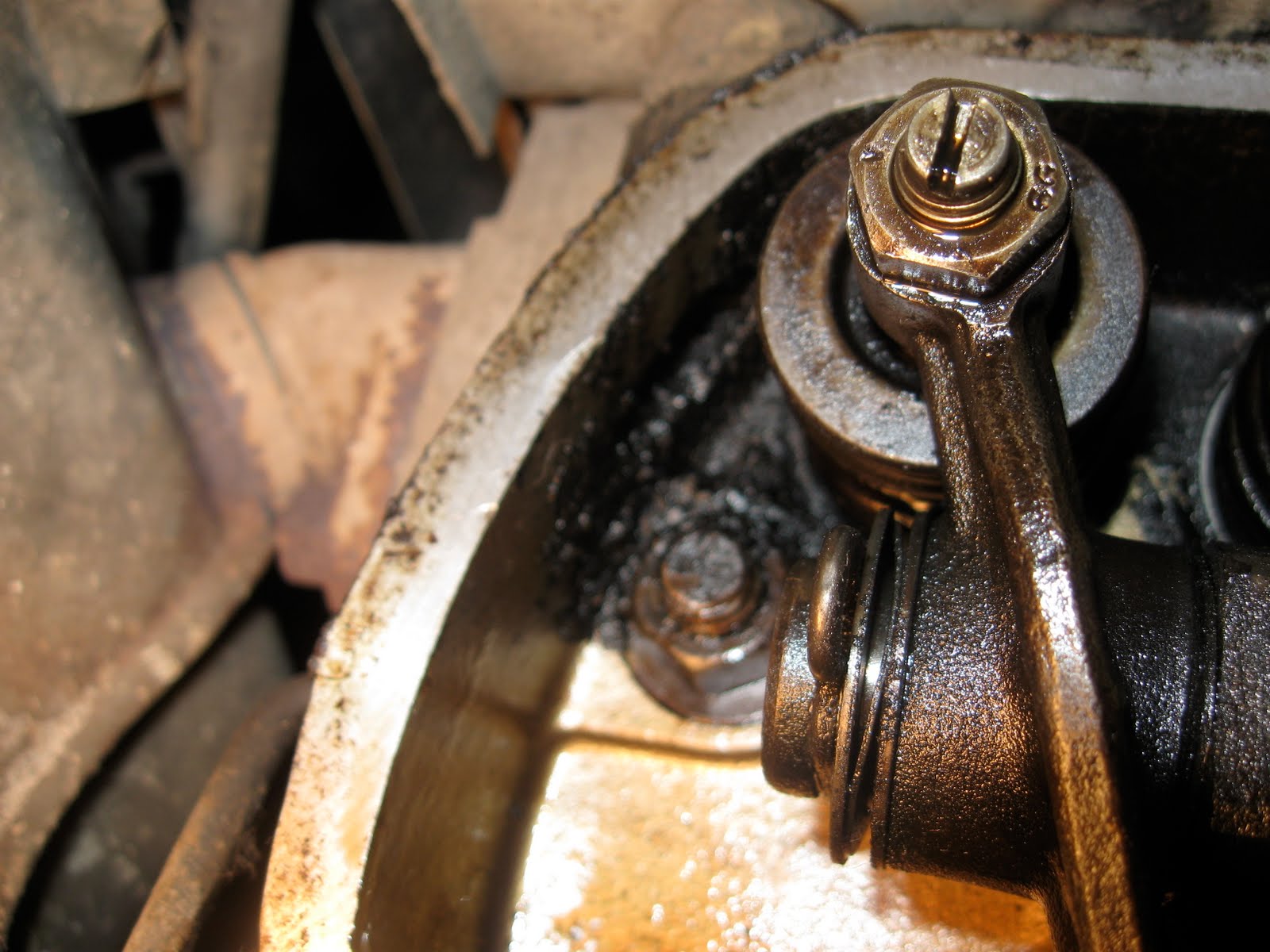
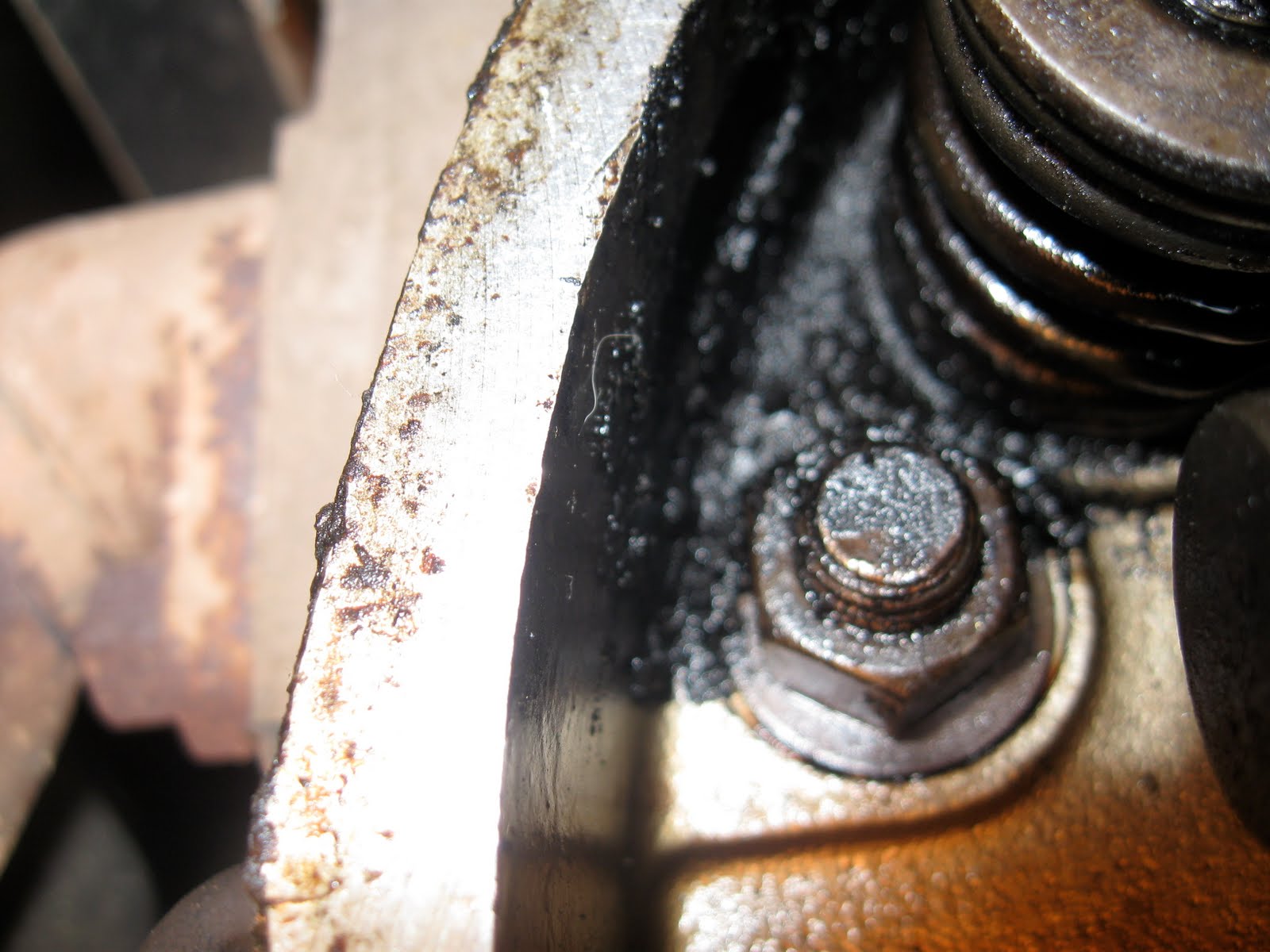
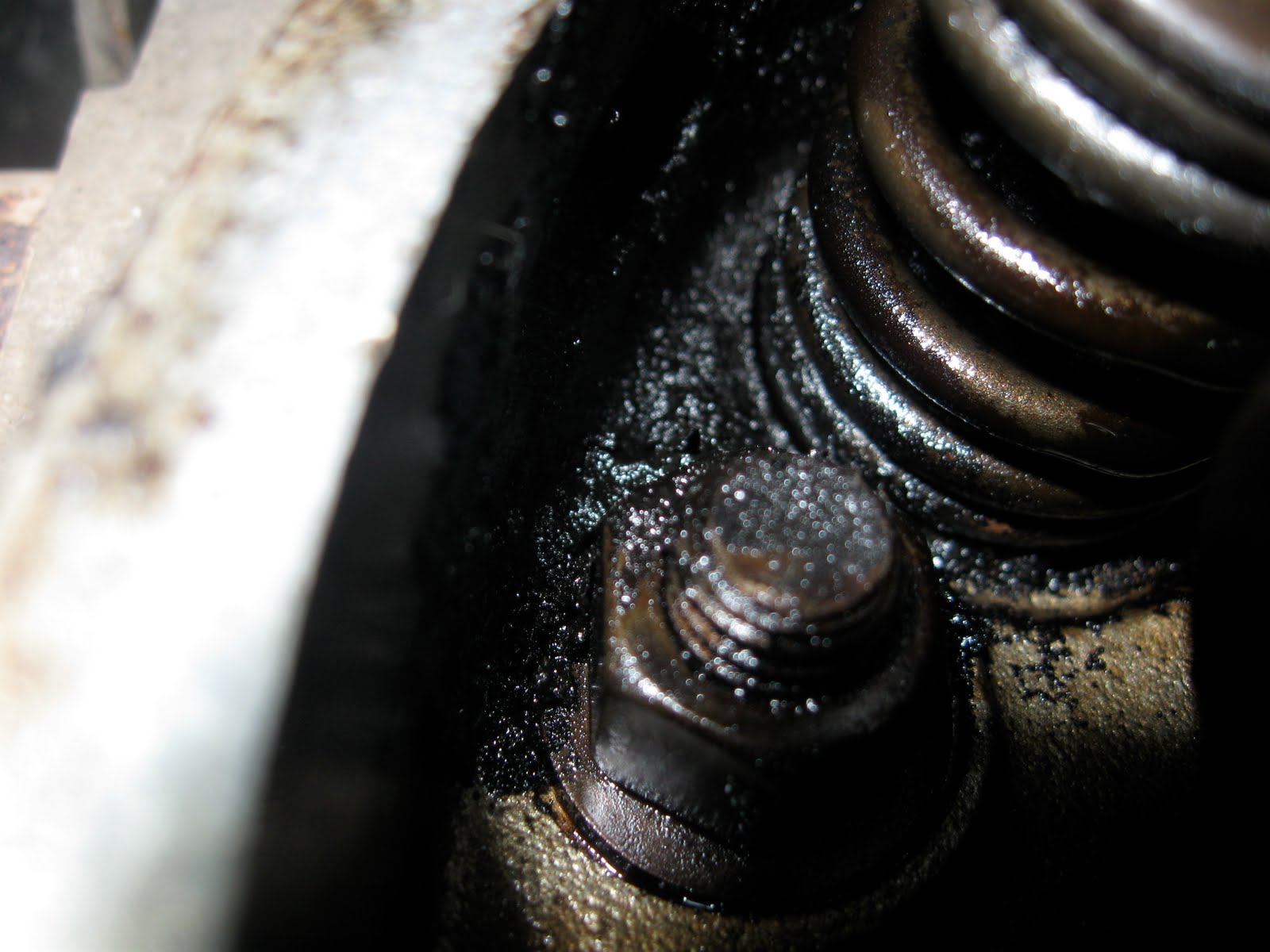
That black stuff was dryish and flaky, and had no strong smell. I wiped it off as best as I could. This was the only place I saw it.
What is it?
Posted: Tue Apr 06, 2010 8:23 am
by hambone
Maybe a rich brew of Permatex 3H and cooked oil MMMMM good.
That head looks like it hasn't seen a machine shop in some time.
Posted: Tue Apr 06, 2010 10:26 am
by Gypsie
Wild stab o' the day:
oil leaking past the valve guide bubbling, drying and caking in the head. Potentially combustion stuff sneaking past as well
???'s:
When was the last time this spot did not have this stuff on it?
What is the compression, (dialed in) on that cylinder?
When was the last time the head was off and inspected/worked?
How much oil are you using over time, and does it show up on the ground?
2 cents
Posted: Tue Apr 06, 2010 10:29 am
by whc03grady
Gypsie wrote:
???'s:
when was the last time this spot did not have this stuff on it?
When was the last time the head was off and inspected/worked?
How much oil are you using over time, and does it show up on the ground?
AAAs:
1&2: Unknown--we've only had it for 1700 miles.
3: Not much, there have been small drips on the ground but not near this. The valve covers have not been leaky.
There is some sort of port that enters the head directly above the stuff, and it looks like the stuff may be issuing from that port. I don't have the Bentley right here to tell me what that port is/does.
Posted: Tue Apr 06, 2010 10:34 am
by Gypsie
The port is on the valve cover? Or the head?
If the stuff is coming from the port it is likely just caked cooked oil. Perhaps the PO let it run way too hot for a period of time. Grady love should help some.
Posted: Wed Apr 07, 2010 9:48 am
by Amskeptic
Heat-induced coking of the oil. Block the pushrod tubes with paper towel plugs. Clean it thoroughly with a stiff nylon brush and plenty of GumOut. Rinse well with GumOut. Get your oil can out and oil each rocker arm side surface and the valve contact surfaces. Do the other side of the engine too. Change the oil after twenty minutes. Now you have a baseline. Now you can check for this recurring. If it recurs, you have a hot-running cylinder if it is local to #3 exhaust, hot running bank if if gets black while the other side of the engine is OK.
BEFORE:
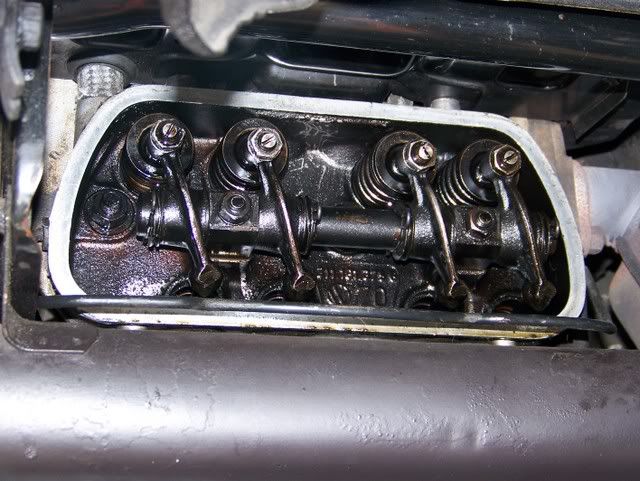
AFTER:
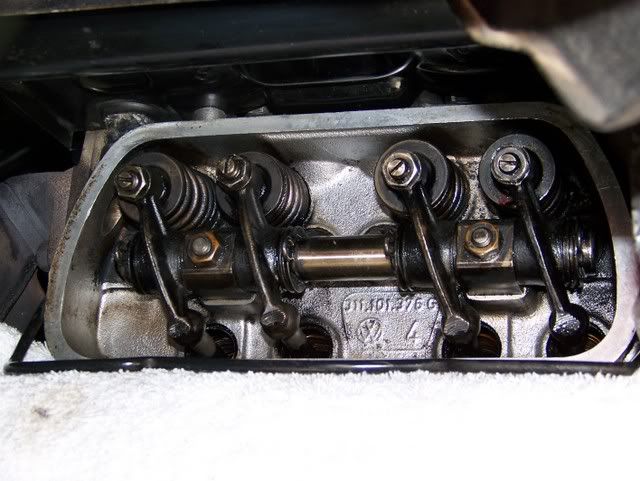
Posted: Wed Apr 07, 2010 12:28 pm
by Gypsie
Just so's I have a clear understanding of this lesson, I will ask:
The "heat induced coking" is causing the oil to coke at this location because the heat is there? The oil is there as a natural condition of engine operation and is not being introduced because of a flaw?
This would make sense considering that there is alot of heat there normally.
Can this be caused by improper settings (ie out of time, air/fuel mix etc)?
If so how long would it take to get to the point shown in Grady's pix?
Just logging away data for future reference.
Posted: Wed Apr 07, 2010 12:31 pm
by hambone
Probably depends on how long the engine has been overheating and how much chocolate sauce has been used. I'm sure improper settings would contribute, or improper driving habits/shifting etc. Could also be a symptom of a tired engine.
I've never seen it as bad as Colin's pix.
Posted: Fri Apr 09, 2010 10:53 am
by Gypsie
In my view of Grady's pix it appears to be a VERYT localized coking. Colin's looks like an overall, over time buildup.
The flaking and concentration of the Grady Head looks like a specific heat issue. Like heat blowing right on that spot, alablowtorch. Exhaust leka directed there? (wrong end for exhaust though), Leaky barrel-to-head or clogged coolant air flow? Very strange. Interested to hear how this pans out.
Posted: Fri Apr 09, 2010 12:33 pm
by whc03grady
Gypsie wrote:In my view of Grady's pix it appears to be a VERY localized coking. Colin's looks like an overall, over time buildup.
Yes it is in fact very localized. It's just right there. It really seemed as though it was issuing from, or working toward, that port that I mentioned. The port I'm talking about is in the head itself, btw. It's the one you see at the upper left of the head in Colin's BEFORE picture, the one with braided hose that runs straight up. I'm looking at the Bentley tonight about what it is/does.
Posted: Fri Apr 09, 2010 6:01 pm
by Amskeptic
whc03grady wrote:Gypsie wrote:In my view of Grady's pix it appears to be a VERY localized coking. Colin's looks like an overall, over time buildup.
Yes it is in fact very localized. It's just right there. It really seemed as though it was issuing from, or working toward, that port that I mentioned. The port I'm talking about is in the head itself, btw. It's the one you see at the upper left of the head in Colin's BEFORE picture, the one with braided hose that runs straight up. I'm looking at the Bentley tonight about what it is/does.
That is just breather residue. You have oily vapor coming in to the valve cover areas from the air cleaner on Type III engines. Hot metal cooks the vapor lickety split. Clean it.
Colin
Posted: Fri Apr 09, 2010 10:12 pm
by dingo
just curious... what temp readings do you get off the valve covers after shutdown ??
Posted: Sat Apr 10, 2010 9:18 am
by whc03grady
Amskeptic wrote:Clean it.
I did.
dingo wrote:what temp readings do you get off the valve covers after shutdown ??
I dunno, I'm not a needle watcher. I'll give it a look one of these times for fun.
Posted: Sun Apr 11, 2010 7:32 am
by Gypsie
whc03grady wrote:
I dunno, I'm not a needle watcher.
smart aleck maybe.
Do you actually have a needle to watch that would tell you the temp of the cylinder head valve cover? Do you have a surface temp reader that would tell you? They have these little ones you can put in your pocket.

I too am curious about the heat disparity around that head.
Breather residue? So the port mentioned earlier is a breather? I don't see where that question was answered. This is part of the case vent system that is "mostly balanced"? Could that port be briging in heat? Or attracting heat through it's ventilation action. Perhaps a compression chamber leak (I would opine exhaust valve) is giving some extra heat in the head valve cover area (valve guide, leaky valve) ant it is being drawn out the port making the area get 'extra' hot causing the localized coking.
curiouser and curiouser.
Posted: Mon Apr 12, 2010 9:39 am
by BellePlaine
Amskeptic wrote:whc03grady wrote:Gypsie wrote:In my view of Grady's pix it appears to be a VERY localized coking. Colin's looks like an overall, over time buildup.
Yes it is in fact very localized. It's just right there. It really seemed as though it was issuing from, or working toward, that port that I mentioned. The port I'm talking about is in the head itself, btw. It's the one you see at the upper left of the head in Colin's BEFORE picture, the one with braided hose that runs straight up. I'm looking at the Bentley tonight about what it is/does.
That is just breather residue. You have oily vapor coming in to the valve cover areas from the air cleaner on Type III engines. Hot metal cooks the vapor lickety split. Clean it.
Colin
It's been a while since I looked inside my breather, but isn't there some kind of sponge-like material inside the breather which separates the liquid from the vapor? If so, and you are getting oil (or oil vapor) past the breather, would that also indicate a saturated/dirty breather assembly?




